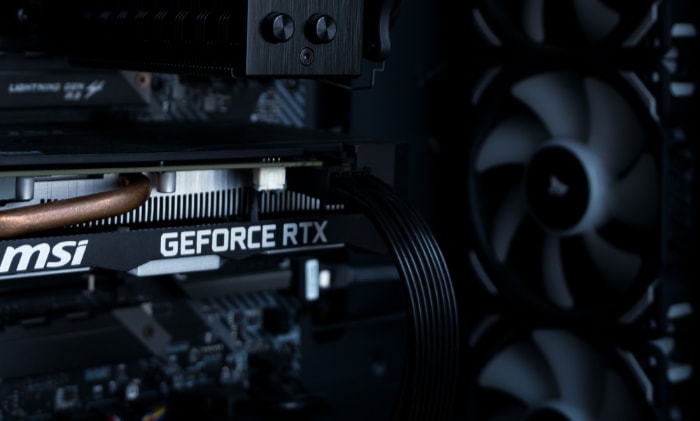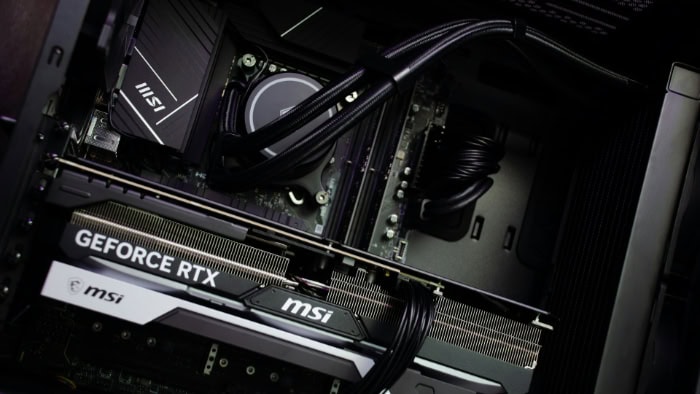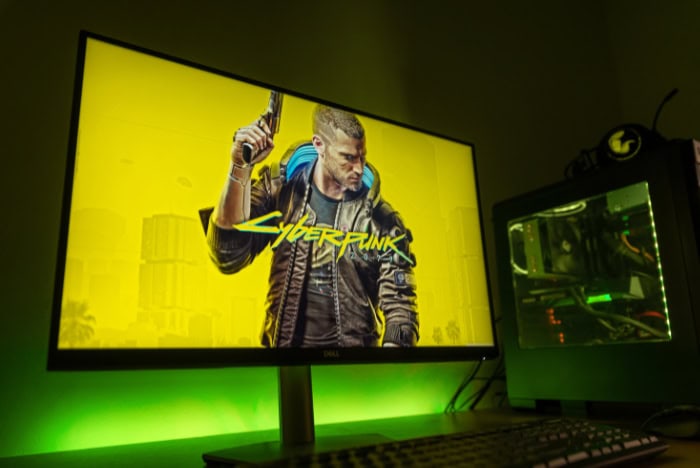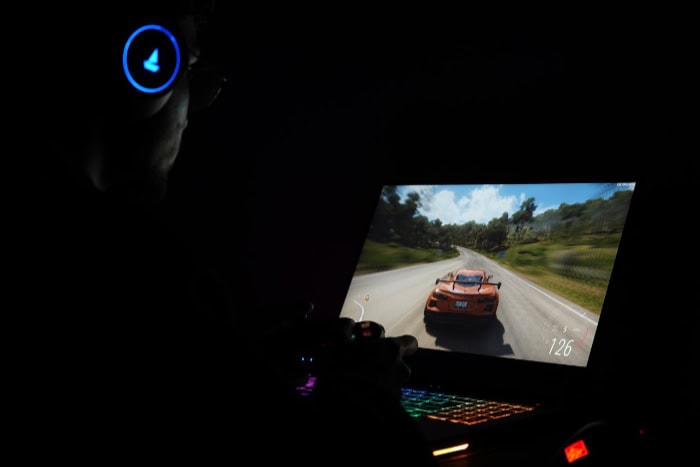Is Ray Tracing Worth It? What Gamers Need to Know

Ray tracing stands among the most impressive graphical advances in gaming, promising virtual worlds that feel truer to life than ever before. By simulating how light interacts with objects, this technology brings breathtaking reflections, realistic shadows, and subtle ambient effects that can completely transform a game's atmosphere.
Yet those stunning visuals come at a cost, often slashing framerates and demanding the latest, most powerful GPUs. Gamers now face a common question: is the leap in realism worth the performance hit and hardware investment?
Performance vs. Visual Quality Trade-Offs
Choosing to enable ray tracing in a game is rarely a simple decision. At its best, ray tracing introduces a new level of realism to lighting, shadows, and reflections, but those enhancements require significant GPU power.
Players must weigh the impressive visuals against a potential drop in smoothness and responsiveness, especially when fast reaction times matter. The trade-off between performance and image quality becomes even more apparent when examining frame rates, the style of gameplay, and personal preferences for immersion or competitiveness.
Frame Rate Impact
Enabling ray tracing almost always leads to some reduction in average frame rates. On most modern systems, users can expect performance losses ranging from 22 to 29 percent, making a noticeable difference if the initial framerates are near the lower threshold of playability.
In more demanding scenarios or games with extensive ray-traced effects, frame rates can drop by over 50 percent. This means that a game running at 90 frames per second without ray tracing could suddenly run closer to 45 frames per second once the feature is turned on.
Lower framerates can reduce the perception of smoothness and, in some cases, even lead to motion sickness for sensitive players.
Visual Payoff
The visual improvements from ray tracing shine brightest in games that focus on atmosphere and immersion. Slower-paced titles such as story-driven adventures or open-world role-playing games benefit the most, as players notice the subtleties of light playing realistically across surfaces, accurate shadows cast by environmental objects, and lifelike reflections in water and glass.
These moments add depth and believability, drawing players into the game's universe. On the other hand, the payoff in fast-paced titles like shooters or racing games is usually far less pronounced.
Rapid movement and intense action can make it difficult to appreciate detailed lighting effects, while a dip in framerate is much harder to ignore.
Game Genre Considerations
Game genre plays a big role in how valuable ray tracing feels. Competitive shooters and online action games demand quick reflexes and ultra-smooth gameplay, so high framerates take priority over subtle lighting details.
Many professional and dedicated players prefer to keep settings lower to minimize every potential input delay and maximize their performance advantage. On the opposite end, those who enjoy exploring richly detailed worlds in slower-paced RPGs or story-focused games may find ray tracing deeply rewarding.
Visual immersion adds to the narrative experience, and small reductions in framerate are often acceptable to enjoy more realistic environments. Choosing where to focus, frame rate or visual effects, often comes down to the kinds of games you love and how you prefer to experience them.
Hardware and Cost Requirements

Ray tracing has brought spectacular visuals to gaming, but those stunning effects rely heavily on modern hardware. Choosing to enable ray tracing often means making sure your system is equipped for the challenge, both in terms of graphical power and your budget.
The technology depends on specialized processing and optimized components, and not every graphics card is built to handle the demands smoothly.
GPU Demands
Ray tracing technology requires graphics cards with dedicated RT (ray tracing) cores. Older GPUs simply do not have the horsepower to run ray-traced games at playable frame rates.
Cards like NVIDIA’s RTX 30 and 40 series or AMD’s RDNA2 and RDNA3 models come equipped with this specialized hardware. Without RT cores, even the most powerful previous-generation cards struggle, often forcing significant compromises in frame rates or resolution.
Those who want to experience ray tracing in modern games usually need to pick from higher-end models that offer robust RT performance. Even among compatible cards, entry-level options can achieve ray tracing only at lower settings or resolutions.
High-quality ray tracing at 1440p or 4K often requires top-tier GPUs, which are priced accordingly.
Upgrade Costs
Embracing ray tracing often coincides with a leap in upgrade expenses. Graphics cards capable of handling modern ray tracing effects command a premium, especially as you move up to models that maintain high frame rates with effects enabled.
The price-to-performance ratio can feel steep if ray tracing is the primary reason for upgrading, especially when less expensive cards still offer strong performance in non-ray-traced titles. While entry-level RT-capable cards are available, the most balanced experience with high frame rates and beautiful, consistent graphics still belongs to the latest and most powerful offerings, which can carry a significant investment.
Some gamers may find the visual benefits worth the added cost, while others might prefer to invest in high-refresh monitors or faster storage instead. Price sensitivity and priorities play a major role in this decision.
Scalability
Ray tracing is not an all-or-nothing feature. Most modern games provide a range of settings, allowing players to scale effects for their hardware.
Opting for medium or selective ray tracing settings can reduce the performance hit to around a 15 percent drop, preserving most of the visual upgrades without drastically lowering frame rates. Intelligent use of settings, such as enabling ray-traced shadows or reflections but skipping global illumination, enables more systems to handle advanced effects.
Scalability has made ray tracing more accessible, especially for those using mid-range hardware. Careful tuning allows players to enjoy a taste of next-generation graphics while keeping gameplay smooth and responsive.
The flexibility to blend visual improvements with acceptable performance remains one of the technology’s greatest strengths, helping more players find a satisfying middle ground.
Game-Specific Implementation Quality

Ray tracing’s real-world impact varies greatly depending on how developers choose to implement it. Not every game benefits equally from advanced lighting and shadows, which means that the value of ray tracing often depends on game design, engine limitations, and the ambition of the development team.
Some titles showcase what ray tracing can do, turning virtual worlds into breathtaking spectacles. Others offer more modest enhancements that barely register during normal gameplay.
Transformative Examples
A few standout games have become poster children for ray tracing done right. Cyberpunk 2077 sets the bar high with its global illumination system, allowing sunlight to bounce accurately through sprawling city streets, casting lifelike shadows and bathing interiors in realistic, colored light.
Ray-traced reflections and shadows add even more depth to the neon-soaked world, making the city feel alive at every hour. Another shining example, Control, uses ray tracing to elevate environmental storytelling.
The game’s polished floors and glass surfaces reflect every detail, from shifting lights to passing characters, capturing the unsettling mood of its shifting government facility. In these cases, ray tracing is not just a visual gimmick but a core part of the atmosphere, reinforcing the world’s realism and drawing players deeper into the narrative.
Minimal-Impact Titles
Not all games see meaningful improvement from ray tracing. Some titles already deliver impressive visuals using traditional rasterization techniques or screen-space effects, which can mimic realistic lighting and reflections without the high hardware cost.
In certain fast-paced or stylized games, careful use of non-ray-traced techniques can look as good or even better than their ray-traced counterparts. Maps with fewer reflective surfaces or nighttime settings often showcase minimal differences when ray tracing is activated, making the performance cost harder to justify.
Players may find little reason to enable ray tracing if the improvement is marginal and the hit to smooth framerates is substantial.
Developer Priorities
The quality and ambition of ray tracing features depend largely on studio priorities and technological goals. Some developers invest considerable time and resources into optimizing their engines, ensuring that ray tracing not only works but also complements the game’s artistic intent.
Smart use of hybrid rendering, mixing ray tracing with traditional effects, can provide impressive results without overwhelming most hardware. On the other hand, some studios opt for simpler implementations, perhaps enabling only one or two ray-traced features or locking advanced effects behind high-end settings.
The decision often hinges on balancing accessibility with artistic vision and deciding how much of the development budget to dedicate to advanced graphics technology relative to gameplay or content.
Players benefit the most in games where developers have thoughtfully integrated ray tracing, blending technical prowess and creative vision to increase immersion without sacrificing performance.
Technical and Aesthetic Benefits

Ray tracing is often celebrated for its ability to make virtual spaces feel more lifelike, but the advantages reach far beyond simple realism. The technology opens new doors for both technical accuracy and creative expression, giving developers the tools to craft scenes that truly stand out.
Players notice not only improved fidelity but also fewer distracting graphical issues. With advances in ray tracing, both immersion and artistic ambition can reach new levels.
Realism
Accurate light simulation stands as one of ray tracing’s greatest achievements. Shadows gain convincing depth and softness, adjusting naturally based on distance and light source size.
Subtle effects like refractive caustics, such as the dynamic patterns of light that appear beneath water or glass, add an extra layer of believability. Ambient occlusion, which refers to the shadowing that occurs in corners and where surfaces meet, gains a sense of volume and authenticity that older techniques struggle to match.
Every element of a scene, from a sunbeam streaming through a dusty window to the faint outlines of objects hidden in darkness, benefits from the mathematical precision that ray tracing brings.
Artistic Flexibility
Ray tracing is more than just a technical leap; it is a creative tool that empowers artists to push the boundaries of visual storytelling. Dynamic lighting, for example, becomes far easier to implement and adjust in real time.
Developers can simulate everything from dramatic storms to subtle changes in atmosphere as the day shifts to night. Reflections can now capture world details that were previously impossible, like characters moving behind frosted glass or glowing neon signs reflecting off shiny puddles.
This flexibility enables entire scenes to be reimagined, letting designers experiment and create environments that were previously out of reach.
Artifact Reduction
Traditional rendering methods rely on shortcuts that sometimes produce distracting glitches, such as broken reflections at screen edges or unrealistic lighting where camera angles break the illusion. Ray tracing drastically reduces these visual artifacts.
Screen-space reflections, which previously vanished or broke whenever objects left the camera’s view, now appear consistent and physically correct. Lighting transitions remain smooth and seamless, even in complex scenes with multiple light sources or unusual materials.
The result is a cleaner, more immersive visual experience that keeps players engaged with the world rather than distracted by its visual shortcomings.
Mitigating Performance Loss

Ray tracing is famous for its ability to elevate visual quality but just as well known for taking a heavy toll on hardware. Many players want to enjoy the added realism without making big sacrifices in frame rate or responsiveness.
Recent innovations and smarter use of graphics settings now offer ways to balance beauty with playability. With careful adjustments, it is possible to get much of the visual flair while preserving the smooth experience that gamers demand.
Upscaling Technologies
Modern upscaling solutions such as NVIDIA's DLSS and AMD's FSR have dramatically changed the performance equation. These tools generate high-resolution images from lower-resolution renders, lightening the load on the GPU.
The benefit is clear: sharper visuals and higher frame rates, even with demanding effects like ray tracing enabled. However, trade-offs remain.
While upscaling modes can deliver impressive image quality, lower settings may introduce softness or visual artifacts. Players have to pick between maximum sharpness and the higher performance that upscaling provides.
Tuning these options can help maintain a sweet spot between graphical fidelity and responsiveness.
Selective RT Effects
Full-fledged ray tracing often means a significant drop in performance, but most games now allow selective toggling of features. Many players find that enabling only ray-traced shadows or reflections provides much of the perceived improvement without the full cost of global illumination.
Selective effects offer flexibility to keep frame rates high while still enjoying visual upgrades. Certain environments, such as interiors with shiny floors or large glass panes, benefit most from specific ray-traced features, making it a smart choice to activate those only where they matter most.
Optimized Settings
Customizing graphics settings is a straightforward way to reach target performance levels. Lowering the overall ray tracing quality, tweaking ambient occlusion, or reducing the resolution of ray-traced effects can keep games running smoothly.
Most modern titles now provide detailed sliders and toggles for granular control. Experimentation is often necessary to find the right blend for your system and preferences.
A balanced configuration, tailored to your hardware and gameplay style, delivers a satisfying mix of impressive visuals and enjoyable performance.
Conclusion
Choosing to enable ray tracing comes down to a thoughtful balance between hardware strength, game library, and your own expectations for performance. Powerful GPUs make the most of ray tracing’s visual advancements, but not every setup or budget can handle the extra demand without adjustment.
Game preference also plays a major role: those who enjoy slower, visually rich experiences stand to gain the most, while fans of fast-paced or competitive titles may prefer to conserve every frame for smoother gameplay.
A practical approach begins with an honest assessment of your hardware and the kinds of games you love to play. For those seeking the deepest immersion and cinematic visuals, and who can accept lower frame rates or have access to upscaling tech, ray tracing can be a breathtaking addition.
Players who value quick reactions, stable performance, and higher refresh rates may want to prioritize traditional rasterization or only enable selective ray-traced effects.
At the end of the day, the value of ray tracing is highly personal. Some will see it as a must-have feature, while others may view it as a luxury best enjoyed in certain games or on future upgrades.
The choice comes down to what matters most to you: eye-popping realism and dramatic lighting, or lightning-fast response and unshakable smoothness. Both approaches are valid, and the best decision is always the one that fits your own play style and priorities.


